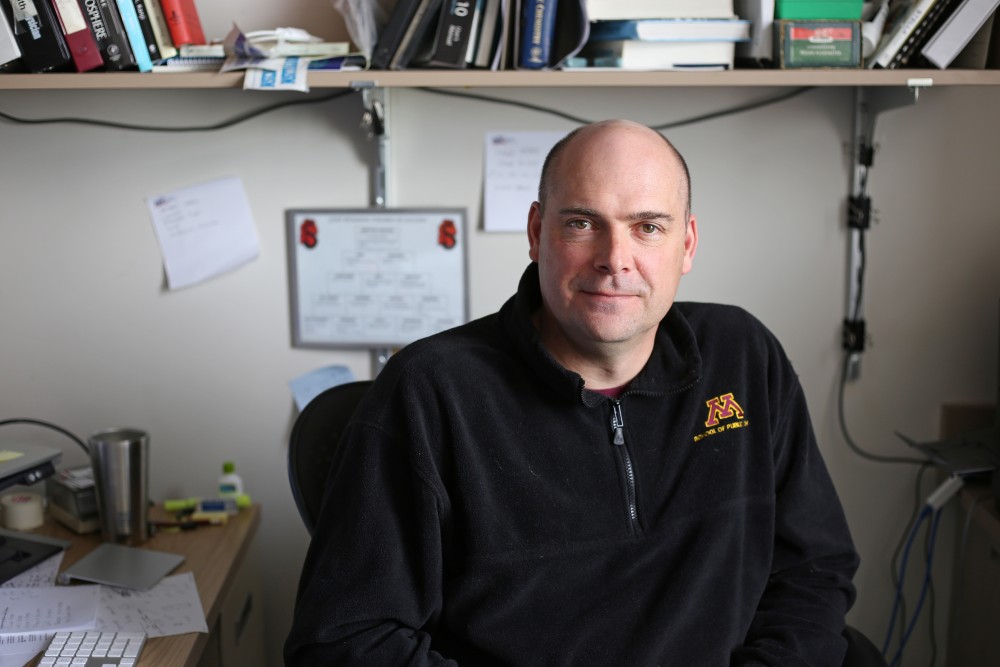A new development from University of Minnesota researchers could filter harmful chemicals from groundwater, preventing the compounds from reaching wildlife and humans.
The process, which is set for field testing later this year, could be useful in limiting contamination from chemicals known as PFAS. The chemicals drew national attention this year when the state of Minnesota settled a years-long legal battle with manufacturing giant 3M Corporation over PFAS contamination in the east metro.
The research team, headed by University associate professor of environmental health sciences Matt Simcik, has found a way to trap PFAS below ground.
Researchers drill a well into a contaminated aquifer and inject a non-toxic chemical compound with an electric charge of PFAS to make the harmful chemicals stick to the soil, allowing the PFAS-free water to flow through the aquifer.
PFAS chemicals can harm fetal brain development, said Yousof Aly, a recent water resources science Ph.D. graduate who was part of the research into the method. Some studies have linked the chemicals to increased cancer risk and other negative health outcomes, but these findings have been contested by some experts.
“Although it doesn’t actually change the color or taste of the water, it then creates another problem because it’s harder to detect,” Aly said.
3M started using PFAS chemicals about 70 years ago to make products like non-stick cookware and fast food wrappers. Areas near these manufacturing facilities are often contaminated because products containing PFAS release the chemicals into the ground when they break down.
Until the 1970s, 3M dumped these chemicals into Twin Cities landfills. The state of Minnesota filed a lawsuit over the pollution in 2010. In 2017, the state updated the suit to include allegations that residents of Oakdale experienced higher rates of cancer and fertility and reproductive issues as a result. The state reached an $850 million settlement with 3M in February.
Last month, the Minnesota Department of Health required Lake Elmo to shut down its wells and a water tower because of excessive PFAS contamination.
The legal case against 3M was helpful in giving scientists more information on the topic and also increasing public awareness of PFAS contamination, said University environmental law professor Alexandra Klass.
“Scientists can’t generally do that on their own,” Klass said. “The only reason most people outside the east metro know about the problems with these chemicals is because of the lawsuit.”
Right now, drinking water contaminated with PFAS chemicals has to be filtered either by a facility or with carbon filters in residents’ homes, Simcik said.
“There really isn’t a way to treat this while the water is still in the ground. It needs to be pumped to the surface and treated using granular activated carbon filter,” said Minnesota Pollution Control Agency spokesperson Walker Smith.
These expensive processes are not reliable since they don’t always catch all the chemicals, Simcik said.
His work aims to solve this problem at the source.
“The groundwater has not been cleared. What they have done [through filtering] is provided clean water but not removed it from its source,” Simcik said.
Aly said the method would reduce costs by removing chemicals from water earlier in the process, eliminating the need for carbon filters.
Plus, removing PFAS chemicals from groundwater would benefit fish and plants by preventing the chemicals from reaching their habitats, Simcik said.
Simcik is working with the U.S. Department of Defense and will be testing the method in the field later this year.








